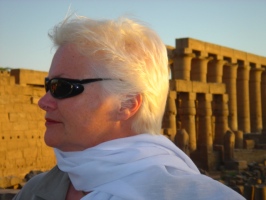Originally published in LLL US Western Division’s Connections #93, January/February 2001
I coordinated the talent shows for the USWD TEAM Meetings in 1998 and 2000. I had never met most of the performers until a few days before the performance, and none of us had ever been in the buildings where the shows would be held, let alone on the stages. How did I do it? Below are some considerations for coordinating your own talent show long distance.
Put the word out. As soon as you know the meeting dates, you can tell people about your need for acts through publications, word of mouth, and personal contacts. Your best response may come from people who have seen someone perform or have performed themselves at other LLL functions. Many Leaders are very modest about their other talents and may need a nudge from their friends.
Arrange for a Mistress of Ceremonies. This might be someone who is not performing herself and who can fill in gaps with patter, be gracious, thank each act as she/they exit the stage, and put audience and performers at ease through inevitable snafus and delays. The talent show coordinator could perform this function, although she may feel her time and energy would be better spent behind the scenes.
Encourage diversity. Skits, musical performances, and poetry readings might be augmented by karate demonstrations, baton twirling, and magic acts. Let Leaders be creative. Encourage them to remember all the things they can do.
Trust your cast. I never auditioned anyone for these shows, over the phone or otherwise. I always trusted that if someone wanted to be in the talent show, she was talented enough to be in the talent show.
Assure performers they can reprise old material. A singer doesn’t have to learn new songs for your show. She can do a song she’s done a hundred times on other occasions. If a group of women did a great skit at a workshop or conference, they might like to reprise it at your show. These acts will be new and fresh to this show. And, if you choose to perform yourself, you might use old, reliable material to save your nerves for focusing on the other actors and musicians.
Set time limits. You might start out by assigning an individual performer five minutes and a group act ten minutes. Despite the tightest controls, each act will take more time than you expected for the set up and take down of music stands and props, and for the audience’s reactions.
Keep in contact with performers and meeting organizers. I used e-mail almost exclusively for contacting actors and musicians in the TEAM 2000 show. I periodically contacted the Division Director and Department Coordinators to let them know how our program was filling out. I also stayed in touch with local (to the talent show venue) Leaders to help with props and CD players.
Keep venue requirements simple. In our 1998 show, I asked for a tuned piano. The piano was tuned, but there was no piano bench! I’ll never forget watching pianist Nancy Spahr rehearse on three stacked plastic chairs with singer Jeannette Wachtel. In the 2000 show, I decided to forego the extra of renting a piano (and we lost some acts because of it). Upon arrival at Lindsay Auditorium, however, we found a piano on the stage anyway. You never quite know what situation you’ll find when you do long distance coordinating!
Two detachable microphones on stands worked well for both shows. At the 1998 show, we used a local Leader’s portable CD player for some musical numbers. At the 2000 show, we were offered the auditorium sound system but were frustrated with complications of its operation.
The 1998 show was performed on carpeted risers in a banquet room in front of people at dining tables. The 2000 show was performed on a wooden stage in a university lecture auditorium in front of an audience seated in rows of desk seats.
Prepare a program. I typed up a rough draft of the program immediately and kept in constant contact with all the performers. Musicians and actors often have preferences for what position in the program they hold. Accommodate all requests as best you can.
Prepare a performers’ biography section. Audience members love to read about the women brave enough to get up on stage. Include details about LLL positions held, children, hobbies, something unique about where they live, etc. For group acts, you might total the number of participants’ children, years nursing, and years in LLL. Keep a careful record of performers’ addresses—postal and electronic—for thank-you notes later.
Expect last-minute acts and program revisions. Set a deadline for information and additions to your written program and performers’ biography section. However, some Leaders may now know whether they can even participating in the meeting—let along the talent show—until just weeks before.
Allow several days for printing your program booklet. This document will be a special souvenir for all show participants and attendees. Make extras for performers who may want more copies to share.
Take care of the performers. Performers at these shows may be rusty at their craft. Motherhood often doesn’t allow for lots of rehearsal time. Be reassuring: all participants are nervous, but an LLL audience is enthusiastic and very forgiving. If cast members are too nervous to eat, you might be able to make arrangements with the kitchen staff to save their dinners till after the show.
Thank the cast. These performers were willing to participate in an extra activity at an LLL function. Seek them out throughout the rest of the meeting for personal thank-yous and then send notes to everyone once you’ve returned home. Bravo!

Post a Comment